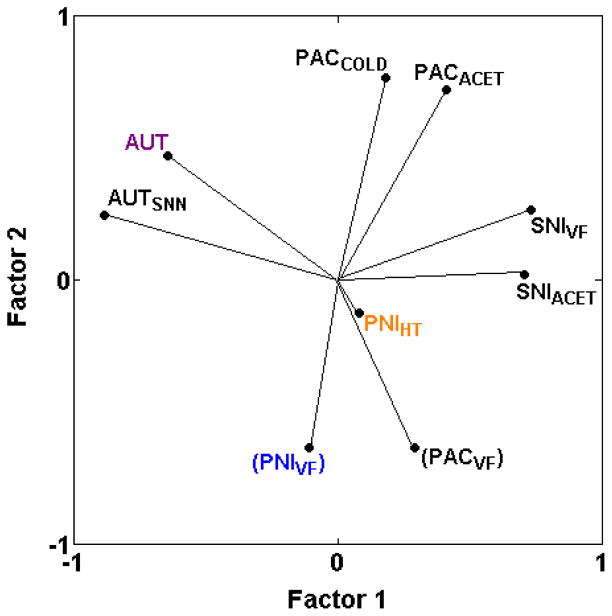Fig. 6.
PCA plot of cross-correlations among neuropathic pain assays. Neuropathic pain assays segregate based on whether nerve injury is caused by complete transection of spinal and/or sciatic and/or saphenous nerves (AUT, AUTSNN), transection of two of the three branches of the sciatic nerve (SNIACET, SNIVF), spinal nerve ligation (PNIHT, PNIVF), or chemotherapy drug-induced nerve injury (PACACET, PACCOLD, PACVF). Further segregation also occurs based on the method of assessment (PACVF versus PACACET, PACCOLD; PNIVF versus PNIHT). Thus, there are at least four genetically distinct types of neuropathic pain assay with little overlap across methods of nerve injury. PNIHT might represent a fifth type; the short vector for PNIHT indicates that these two principal components do not explain variance in this assay as well as in the other assays with long vectors. Note that despite the graphically close positioning of PACVF and PNIVF, these two assays are only mildly correlated (rs = 0.18; Table 2), as discussed in the text and indicated with parentheses around the assay label, indicating that the assays do not represent a single genetically distinct assay type. The proportion of total variance accounted for is 0.53. Font color reference is as in Fig. 2 legend.

